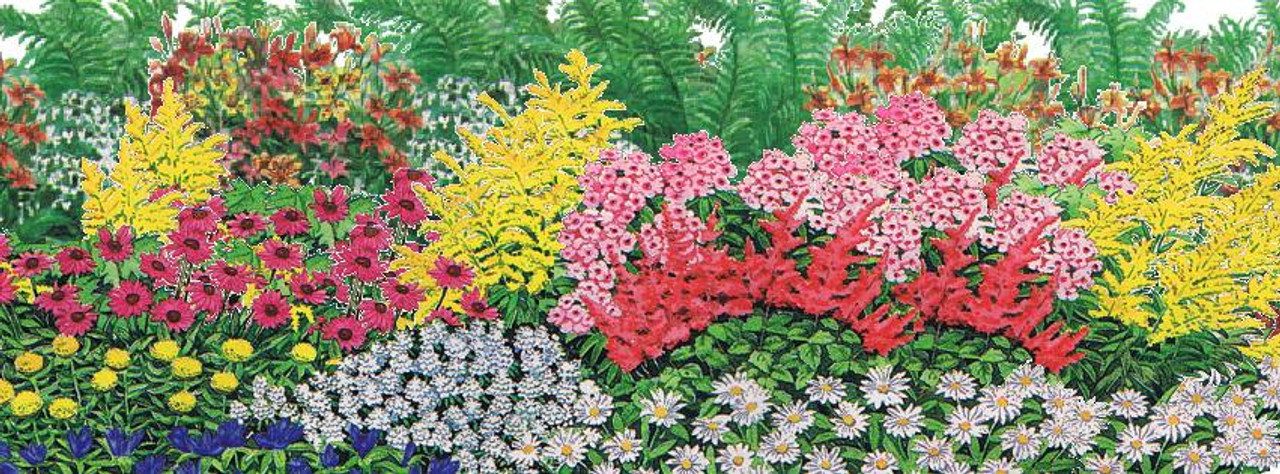Continuous Bloom and Diverse Delights
Attract a flurry of pollinators throughout the season with a vibrant tapestry of perennials that bloom in succession. Early bloomers like columbine and crocuses welcome spring pollinators with a much-needed first meal. Keep the buffet going through summer with mid-season favorites like coneflowers and lilies. As fall approaches, asters and goldenrod provide a last hurrah for pollinators before winter.
Pollinator Powerhouse Perennials
Coneflowers (Echinacea): A colorful butterfly and bee magnet, sporting purple, pink, orange, and yellow blooms from midsummer to fall. They are also drought and heat tolerant.
Lavender (Lavandula): This fragrant herb entices bees, butterflies, and hummingbirds with its purple and blue blooms from midsummer to fall. Plus, it tolerates drought and deters deer.
Russian Sage (Perovskia atriplicifolia): Towering with lavender-blue blooms in late summer and fall, this airy plant attracts bees, butterflies, and hummingbirds. It boasts drought tolerance and deer resistance.
Milkweed (Asclepias): A vital food source for monarch butterflies, milkweed offers clusters of fragrant flowers in pink, orange, and yellow from midsummer to fall. It thrives in drought and poor soil.
Blazing Star (Liatris spicata): A tall showstopper with purple blooms in late summer and fall, it beckons bees, butterflies, and hummingbirds. It is also drought tolerant and deer resistant.
Asters (Aster): A diverse group with a wide color range (pink, purple, white, blue), asters bloom in late summer and fall, delighting bees and butterflies. They are drought and cold tolerant.
Pollinator-Friendly Garden Practices
Embrace Native Plants: Native plants are best suited to your local climate and soil conditions, providing optimal sustenance for native pollinators. Find a list of native plants for your area by contacting your local extension office or native plant society.
Single Over Double: While double-flowered varieties might seem prettier, single-flowered varieties have more stamens and petals, translating to more nectar and pollen for pollinators.
Cluster Power: Pollinators are drawn to patches of flowers rather than solitary blooms. Plant your flowers in clusters to maximize their impact.
Let Some Go to Seed: Seeds offer sustenance for birds and other wildlife, and also allow pollinators to reproduce.
The Vital Role of Perennial Grasses
While not the most attractive food source themselves, perennial grasses play a crucial role in creating a healthy pollinator habitat:
Shelter and Overwintering Sites: Dense foliage and upright structures provide valuable protection from wind, rain, and predators. They also serve as essential overwintering sites for butterfly pupae, moth larvae, and beneficial insects.
Supporters of Beneficial Insects: Many beneficial insects, like ladybugs, reside in perennial grasses, helping to keep pest populations in check naturally.
Habitat Diversity: Planting various perennial grasses alongside flowering plants creates a more diverse habitat, attracting a wider range of pollinators.
Beneficial Grass Options for Pollinators
Little Bluestem (Schizachyrium scoparium): This native North American grass offers winter interest with golden seed heads and serves as a larval host for butterfly species.
Switchgrass (Panicum virgatum): Another winter beauty with reddish-brown seed heads, it is a great late summer and early fall pollen source for bees.
Indian Grass (Sorghastrum nutans): A beautiful native grass with airy flower plumes that turn golden brown in fall, it is a favorite food source for many butterfly species.
Muhly Grass (Muhlenbergia spp.): This genus includes excellent pollinator choices like Hairy Muhly (Muhlenbergia capillaris) and Pink Muhly (Muhlenbergia lindheimeri). They provide pollen, seeds, and attractive feathery flowerheads.
Additional Tips
Nix Pesticides: Pesticides harm pollinators along with targeted pests.
Provide Water: A birdbath or shallow dish made from a large stone offers essential hydration, especially during hot weather.
By following these tips, you can create a haven for pollinators, supporting these vital creatures while enjoying a beautiful garden.

